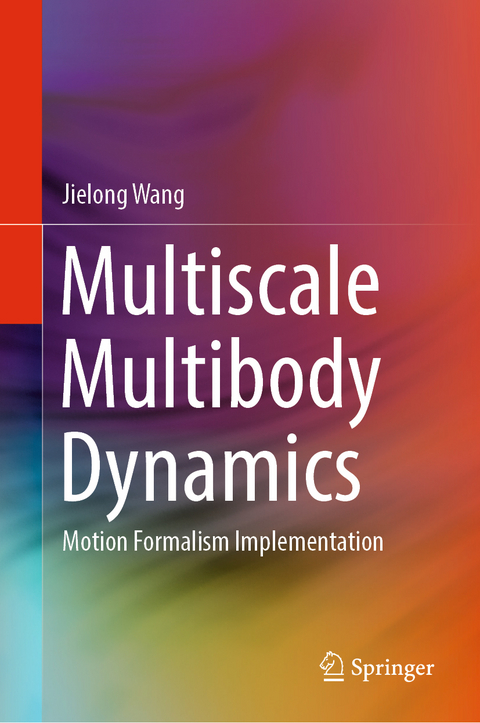
Multiscale Multibody Dynamics
Springer Verlag, Singapore
978-981-19-8440-2 (ISBN)
The intended readers of this book are senior engineers and graduate students in related engineering fields.
Dr. Jielong Wang obtained his Ph.D. degree from the School of Aerospace Engineering of Georgia Institute of Technology in 2007. Under the guidance of his adviser, Dr. Olivier A. Bauchau, distinguished Igor Sikorsky Professor of Rotorcraft, he developed interesting approaches to stability analysis based on the Partial Floquet method and designed an efficient and robust system identification algorithm and optimization control method that can be applied to large-scale, flexible multibody dynamics systems. They are now used by the rotorcraft industry, such as Sikorsky and Bell Helicopter, in a routine manner. After graduating from Georgia Institute of Technology, he worked for Gamma Technologies, LLC. In this company, he designed stiff solvers, such as second-order HHT algorithm and 2- and 3-stage Radau IIA algorithms to solve the large-scale ordinary differential equations (ODEs) and the differential algebraic equations (DAEs). These solvers have been plugged in the GT-SUITE as the kernel code to predict the dynamic response of automobile engines and simulate the chemical reaction process of gasoline combustion. He also independently accomplished the nonlinear beam and cable elements, timing belt, spur/helical gear transmission, and semi-rigid contact models. In 2011, he settled in Beijing, China, and continued his work in multibody dynamics, aeroelasticity, contact/impact, and computational mechanics. He developed the novel numerical modeling program of multibody dynamics, which can model the civil aircraft including wings, fuselage, tails, pylons, nacelles, and control panels as a flexible multibody system to estimate its flight behavior. The element library of this program provides a plenty of elements, such as the geometrically nonlinear beam with warping, the geometrically exact plate and shell, the modal super element, the recursive implementations of six lower pair joints, the screw theory-based rigid body and multi-point constraints, andthe Hertz contact models with Columb/LuGre dry frictions. This program couples with the high-precision CFD solvers to implement the real aeroelastic simulation of the complete configuration of civil aircraft in transonic regime. He also proposed the use of Lyapunov characteristic exponents (LCEs) in addition to Floquet theory for nonlinear flutter analysis. He focused on the relations of the Cosserat continuum, multiscale mechanics, and multibody dynamics and extended his research to the finite element implementation of Cosserat continuum and its multiscale modeling technology. Only under the assumption of geometric dimension reduction, he established the unified formulas of governing equations of three-dimensional Cosserat solid, two-dimensional plate/shell, one-dimensional beam, rigid body, three-dimensional Cauchy solid, membrane, and cable. This new multibody theory combined with finite element technology opens a new gate for effective modeling of multibody system. The multiscale analysis under the framework of this unified theory can be carried out in a more efficient manner: The detailed local scale analysis affords the stiffness constants for the global model, and then a detailed strain/stress analysis in the level of local scale is performed using the predicted global stress resultants as load inputs.
Vector and motion.- Motion and deformation.- Cosserat continuum.- Multiscale multibody dynamics.- Recursive formula of joints.- Implicit stiff solvers with post-error estimation.
| Erscheinungsdatum | 29.03.2023 |
|---|---|
| Zusatzinfo | 79 Illustrations, color; 1 Illustrations, black and white; XVI, 359 p. 80 illus., 79 illus. in color. |
| Verlagsort | Singapore |
| Sprache | englisch |
| Maße | 155 x 235 mm |
| Themenwelt | Mathematik / Informatik ► Mathematik |
| Technik ► Maschinenbau | |
| Schlagworte | Beam Theory • Lie group • Motion formalism • Multibody Systems • multiscale modeling • Recursive expression • Screw Theory • shell theory • Unified formula |
| ISBN-10 | 981-19-8440-9 / 9811984409 |
| ISBN-13 | 978-981-19-8440-2 / 9789811984402 |
| Zustand | Neuware |
| Haben Sie eine Frage zum Produkt? |
aus dem Bereich


